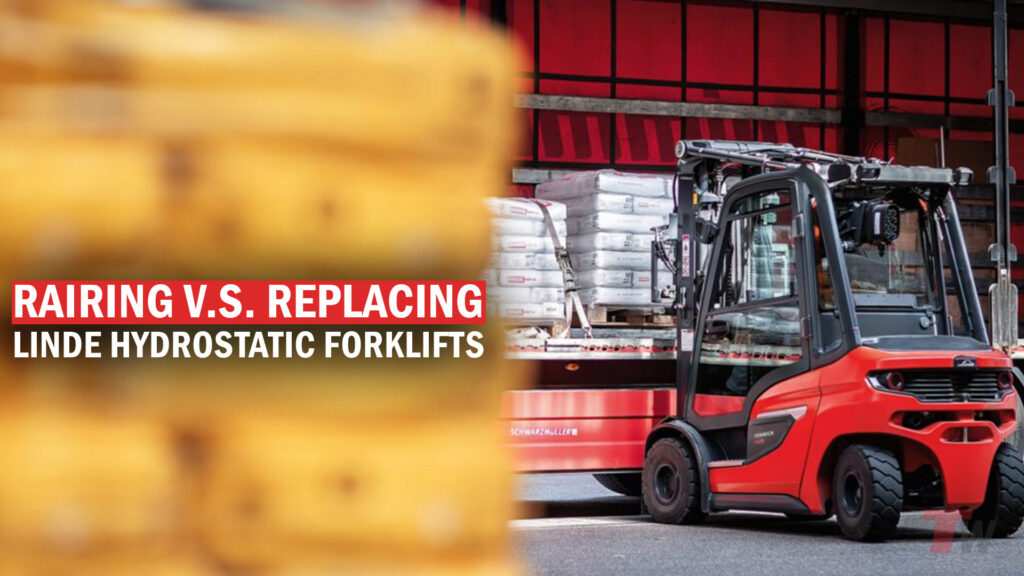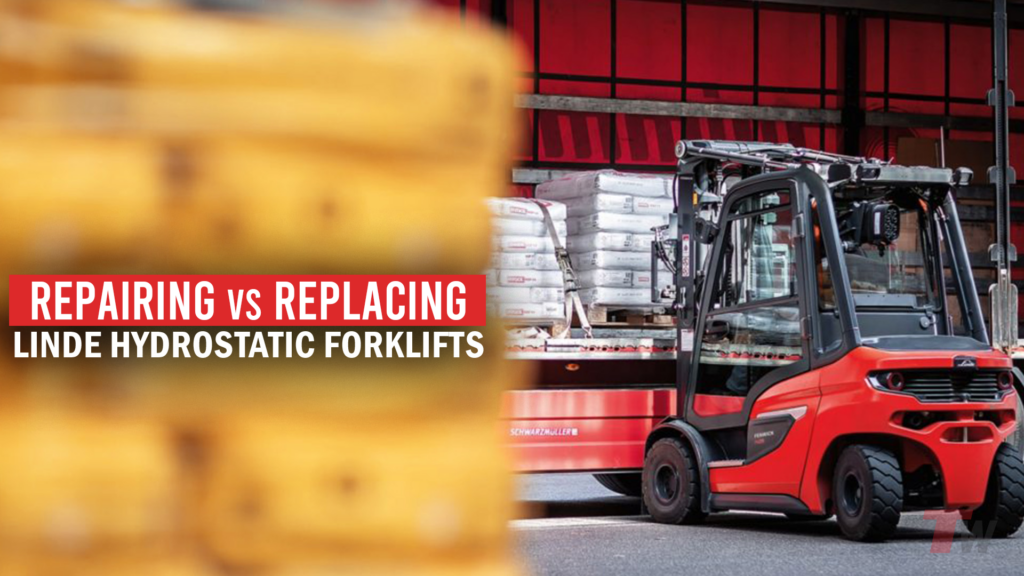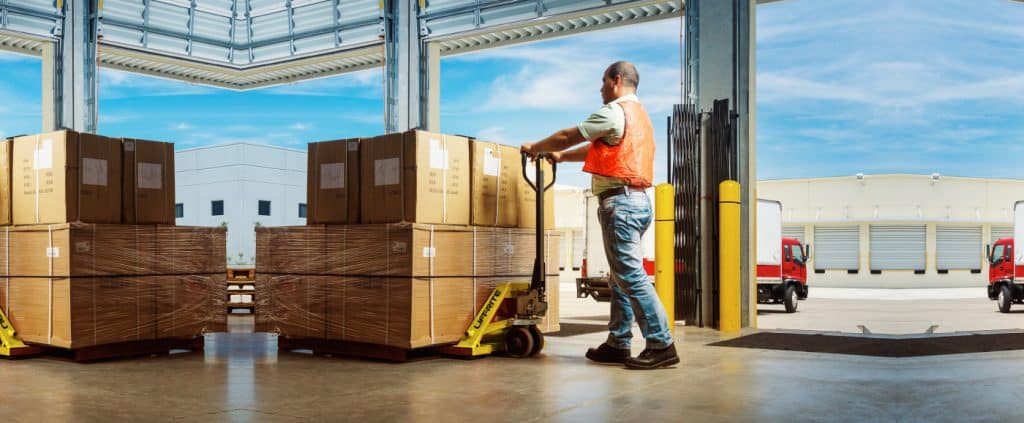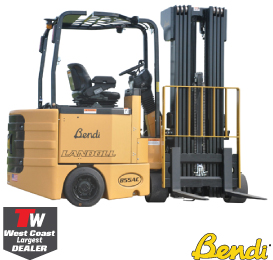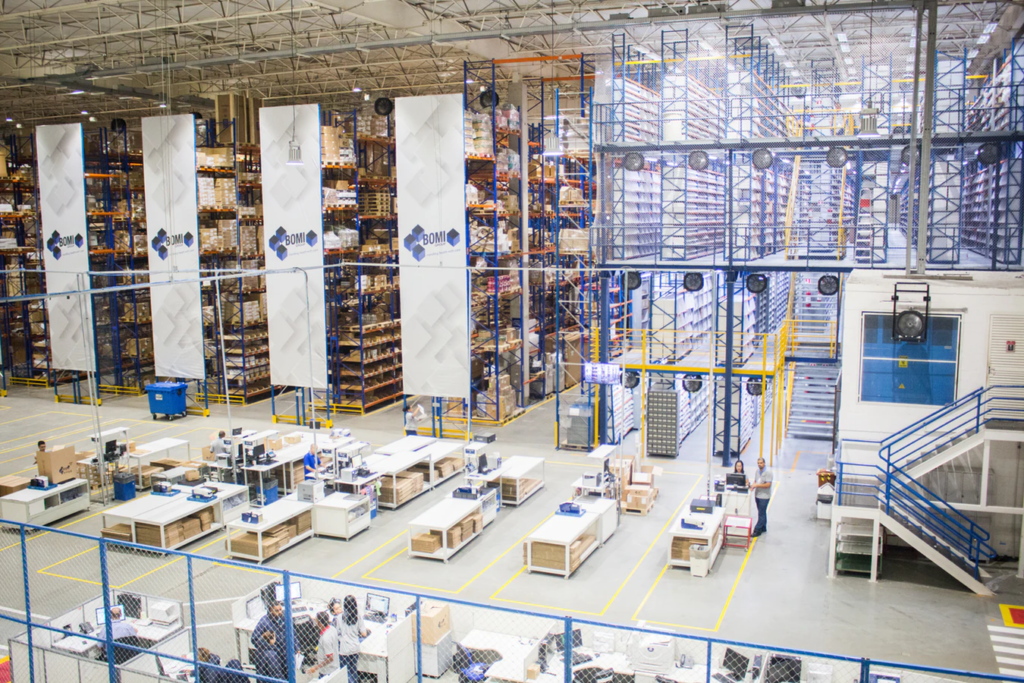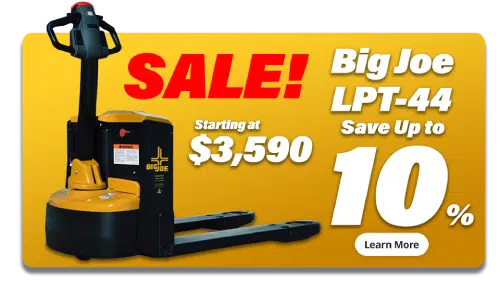What is a Hydrostatic Forklift?
Hydrostatic forklifts are a powerful and efficient alternative to traditional internal combustion forklifts. Unlike conventional forklifts that use mechanical transmissions, hydrostatic forklifts utilize a hydrostatic drive system where hydraulic fluid is used to transfer power from the engine to the wheels. This system allows for smooth and precise control, offering advantages such as instant acceleration and deceleration, as well as automatic braking when the accelerator is released. These forklifts are particularly beneficial in applications requiring frequent direction changes and continuous operation, as they reduce wear and tear on components and minimize maintenance needs. Additionally, the hydrostatic drive enhances operator comfort and productivity due to its seamless operation and precise handling capabilities.
Knowing When to Repair or Replace Your Linde Hydrostatic Forklift
Linde Hydrostatic forklifts are known for their reliability and long lifespan. With proper care, Hydrostatic forklifts require minimal maintenance compared to forklifts with a traditional, automobile-style powertrain. How much less?
- Engine service intervals: every 1000 hours
- Hydraulic fluid change: every 6000 hours
- Change brake fluid: NEVER
- Replace brake pads: NEVER
- Change transmission fluid: NEVER
- Change oil: NEVER
But even the toughest equipment faces wear and tear. Here’s how to decide when to repair your Linde or invest in a new one.
Signs Your Linde Needs Replacing
- Reduced lifting capacity: If your Linde struggles to lift its rated loads, it might be time to consider retirement. This could indicate internal component wear or limitations due to age.
- Unstable operation: Dropped loads, suspension imbalances, and unresponsive steering all point to significant issues. These problems can not only hinder productivity but also pose safety risks.
- Hydraulic problems: Persistent leaks or clogged lines can be signs of a failing hydraulic system, a core component in Linde Hydrostatics. Address these issues promptly to prevent further damage and costly repairs down the line.
- Frequent repairs: If your Linde requires multiple work orders per year, the cost of repairs might outweigh the benefit of keeping it. This could be a sign of underlying problems or the natural consequence of extensive use over time.
Repair vs. Replace
Linde Hydrostatic forklifts, like other electric forklifts, generally require less maintenance than gas-powered models. However, any forklift will benefit from repairs to keep it running smoothly. Here’s a guideline to help you decide:
- Repair when: Replacing parts like worn tires or batteries can extend the life of your Linde. Repairs are generally recommended if the forklift is under 6 years old and doesn’t require major components like a new engine. Replacing worn-out parts is often more cost-effective than replacing the entire machine, especially for a well-maintained Linde with remaining operational life.
- Replace when: Extensive repairs, especially on a forklift exceeding 10,000 hours or 6 years old, might be a sign it’s time for a replacement. Consider the bigger picture. Compare repair costs to the price of used or new forklifts, factoring in potential future repair needs for an aging machine. Additionally, advancements in technology might make newer models more efficient and cost-effective to operate in the long run.
New vs. Used
When replacing your Linde, consider both new and used options. Purchasing is generally more cost-effective than renting for long-term use. Talk to local Linde dealers and get quotes to compare prices on new and used Linde Hydrostatic forklifts. Look for reputable dealers who specialize in Linde equipment and can provide you with detailed service histories and maintenance records on used models. Outside of repair and replacement options, these are some other things to consider before purchasing or replacing your Linde Hydrostatic forklift:
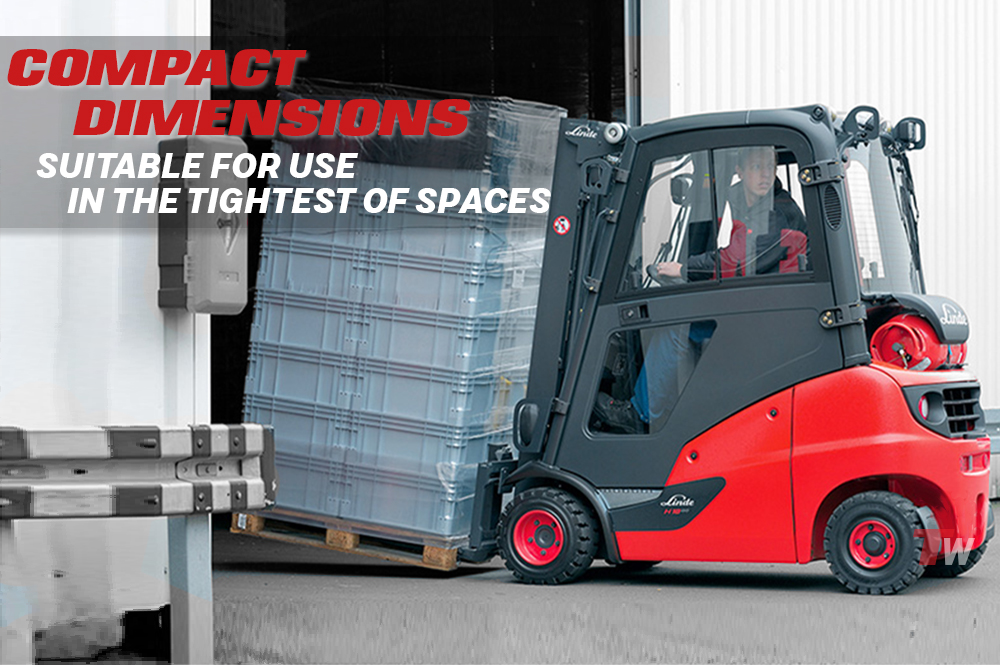
Author’s Pick: Linde 391 Hydrostatic Forklift: Linde Hydrostatic Forklifts, such as the 391 Cushion Propane Forklift, combines the rugged durability expected from a Linde with a massive differential, high-torque transmission and wet disc brakes. Not only do they provide all the cost saving and environmental perks (discussed below) that you can expect from a world class manufacturer like Linde – they also offer maximum visibility for improved safety and all the ergonomic features that are engineered into every Linde forklift.
Watch a Linde Hydrostatic Forklift in action:
Linde 391 Cushion Propane Forklift_Hydrostatic on Vimeo
What is Linde’s Impact on The Environment?
For businesses striving to minimize their environmental impact, Linde hydrostatic forklifts offer a compelling solution without requiring a complete shift to electric models. Here’s how Linde sets itself apart:
-
Linde hydrostatic forklifts boast a remarkable 40-50% reduction in fuel consumption compared to traditional diesel and gas forklifts. This translates to significant cost savings and a cleaner work environment with fewer emissions.
-
Hydrostatic technology eliminates brake dust, a common air pollutant in warehouses. Additionally, the sealed system reduces the need for oil changes and parts replacements, minimizing landfill waste.
-
Unlike traditional forklifts, hydrostatic models prevent tire spinning, which can significantly reduce tire wear and replacement costs. This translates to cleaner floors and a lower total cost of ownership.
Safety and Productivity at the Forefront
Linde hydrostatic forklifts prioritize both operator safety and operational efficiency:
-
Automatic braking upon accelerator release ensures smooth deceleration and immediate stopping if needed. The default rest state prevents accidental gear engagement, and the quiet operation improves situational awareness.
-
Hydrostatic drives excel in tight spaces, minimizing the risk of collisions with people, equipment, or products.
-
A low center of gravity and innovative features like Curve Assist and Linde Load Assist work in harmony to prevent tipping accidents and ensure safe load handling at any height.
Ideal Applications for Linde Hydrostatic Forklifts
These forklifts excel in various industries due to their unique capabilities:
-
Foundries, Lumber Yards, and Pipe Yards: Precise control and guaranteed braking are paramount in these high-risk environments.
-
Meatpacking, Produce, and Seafood Processing: Wet floors pose corrosion challenges for traditional drivetrains. Linde’s sealed hydrostatic system offers superior protection.
-
Warehousing and Distribution: Smooth operation, reliable braking, and fuel efficiency translate to enhanced safety, productivity, and cost savings.
-
Food and Medical Facilities: Quiet operation, low emissions, and a focus on cleanliness make Linde ideal for maintaining hygiene and product quality.
Linde Hydrostatic Forklifts: A Smart Investment for Any Business
Regardless of industry or business size, Totalwarehouse.com champions Linde hydrostatic forklifts for their ability to:
-
Reduce Operating Expenses: Fuel efficiency, extended tire life, and minimal maintenance requirements contribute to significant cost savings.
-
Improve Workplace Environment: Cleanliness, low noise levels, and reduced emissions create a safer and more pleasant work environment for employees.
Totalwarehouse.com – Your Trusted Linde Partner
As a certified Linde dealer, Total Warehouse offers unmatched expertise and support:
-
Expert Consultation: Our team will help you select the perfect Linde forklift for your specific needs and budget.
-
Comprehensive Maintenance Plans: Factory-trained technicians provide customized maintenance plans to ensure optimal performance and longevity of your investment.
-
Responsive Service: Our 24/7 mobile service ensures minimal downtime in case of emergencies.
Contact Total Warehouse Today
Discover how Linde hydrostatic forklifts could take your business to the next level by speaking with a Total Warehouse material handling expert today: (833) 868-2500
